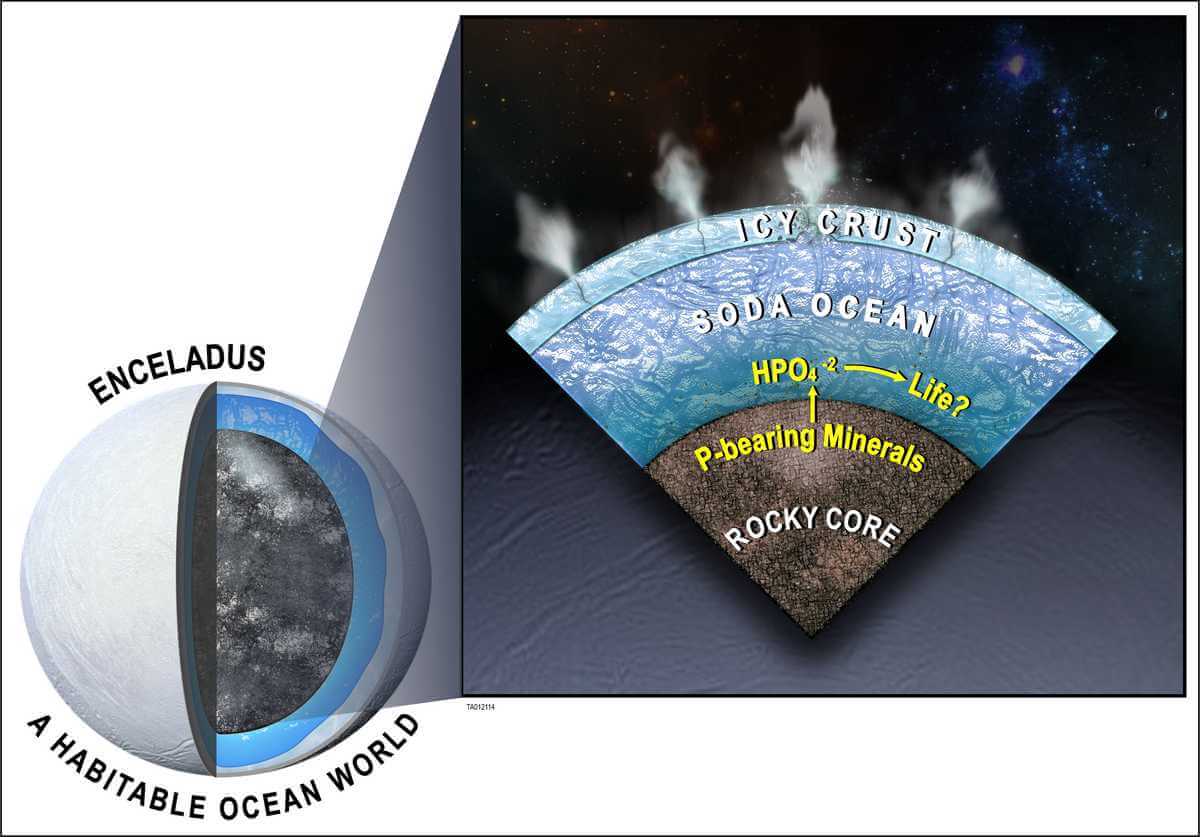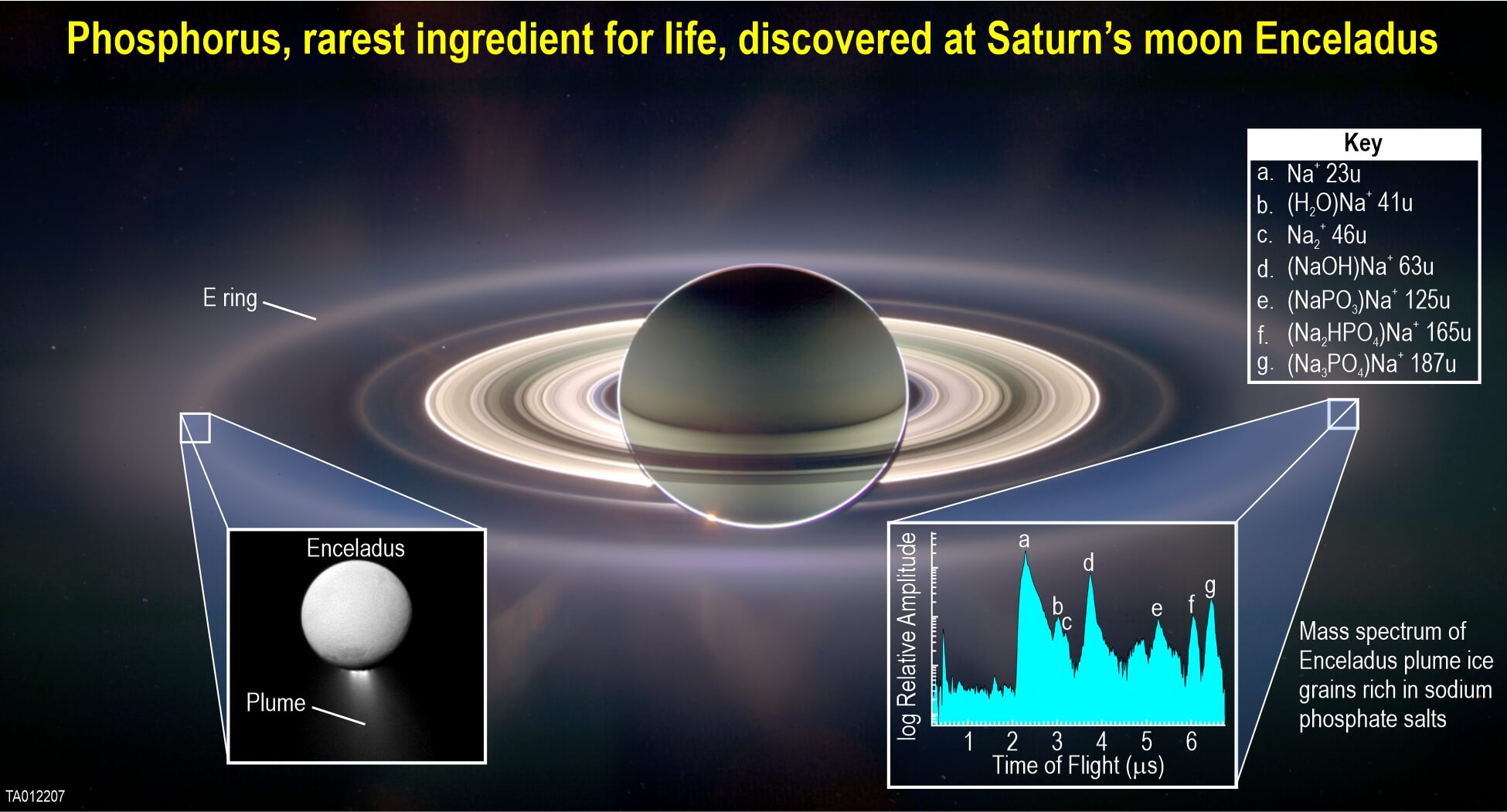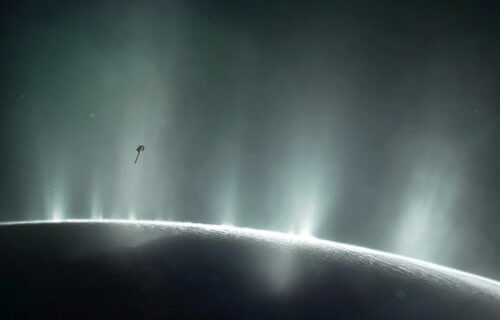‘This is a stunning result for astrobiology and a major step forward in the search for life beyond Earth.’
SAN ANTONIO, Texas — Scientists searching for extraterrestrial life in our solar system have just made one of their biggest discoveries to date. While examining Saturn’s icy moon, Enceladus, astronomers have uncovered the presence of phosphorus — a vital building block for all life on Earth. Moreover, the team notes that the concentrations of phosphorus on Enceladus are over 100 times greater than they are in our planet’s oceans. Could there be an abundance of alien creatures living beneath the ice of our distant neighbor?
Southwest Research Institute’s Dr. Christopher Glein and a team of scientists made this discovery using data from NASA’s Cassini mission. The space probe explored Saturn, its rings, and the planet’s moons for more than 13 years before its journey ended in 2017.
“In 2020 (published in 2022), we used geochemical modeling to predict that phosphorus should be abundant in Enceladus’ ocean,” says Glein, a leading expert in extraterrestrial oceanography, in a media release. “Now, we have found abundant phosphorus in plume ice samples spraying out of the subsurface ocean.”
While Cassini was in space, it discovered subsurface liquid water on Enceladus — a condition scientists now say may be quite common on icy moons in our solar system and beyond. The probe analyzed samples in a plume of ice grains and gases erupting into space through the cracks in Enceladus’ surface. Those scans found the presence of sodium phosphates. Using observational results and lab experiments, scientists have now concluded that phosphorus is also readily available in the moon’s ocean in the form of phosphates.

Why is phosphorus so important for creating life?
Phosphorus in the form of phosphates is an essential building block of life on Earth. It contributes to the creation of both DNA and RNA, energy-carrying molecules, cell membranes, and even bones and teeth in people. These phosphates are also present in the sea’s microbiome of plankton. The team notes that without phosphates, life as we know it simply can’t exist.
“We found phosphate concentrations at least 100 times higher in the moon’s plume-forming ocean waters than in Earth’s oceans,” Glein reports. “Using a model to predict the presence of phosphate is one thing, but actually finding the evidence for phosphate is incredibly exciting. This is a stunning result for astrobiology and a major step forward in the search for life beyond Earth.”

Life may be hiding in the oceans of ice-covered moons
Glein’s team explains that one of the biggest turning points in planetary science over the last quarter-century is the revelation that worlds with underground oceans are common in our solar system. These bodies include the icy moons of Europa, Titan, and Enceladus, as well as the distant world of Pluto.
Earth, on the other hand, sits in a very narrow region of the solar system which scientists call the habitable zone. This is where oceans are capable of existing on the planet’s surface, maintaining temperatures which support liquid water and complex lifeforms like humans and animals.
However, astronomers now know that “interior ocean worlds” can exist over a much wider range from their local star — in our case, the Sun. This greatly expands the number of possible worlds throughout the galaxy which could support alien life in some form.
“Geochemical experiments and modeling demonstrate that such high phosphate concentrations result from enhanced phosphate mineral solubility, in Enceladus and possibly other icy ocean worlds in the solar system beyond Jupiter,” Glein says. “With this finding, the ocean of Enceladus is now known to satisfy what is generally considered to be the strictest requirement for life. The next step is clear – we need to go back to Enceladus to see if the habitable ocean is actually inhabited.”
The findings are published in the journal Nature.
You might also be interested in:
- Astronomers capture best images ever of mysterious space ORCs
- Do aliens love America? 92% of UFO sightings take place in the United States
- Alien life nearby? 2 Earth-like planets discovered in habitable zone just 16 light years away

